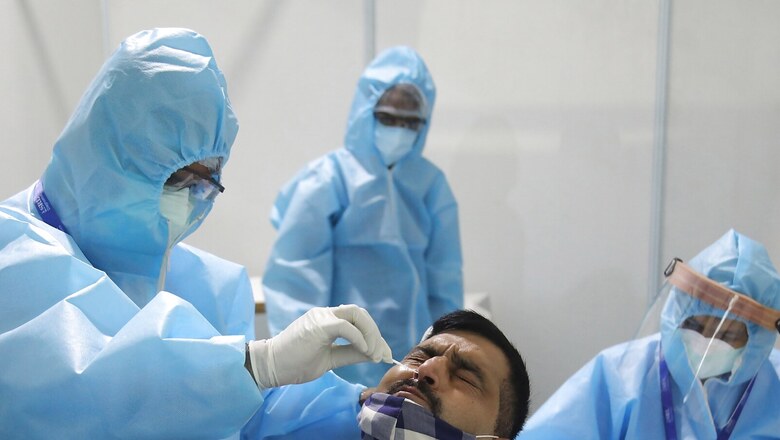
views
The healthcare system in India has always been kept on a backseat and the ongoing pandemic has exposed the true condition of it. As known in the public domain, India has an inadequate number of health staff which include doctors, nurses, community health workers, pharmacists, health technicians and many others. India once was at the top of the list of countries with the highest number of Covid-19 infections and case fatalities due to acute shortages of health workers. Access to healthcare workers is comparatively much poorer in rural areas or localities where people with lower socioeconomic status live. Apart from low health worker density in many regions, there is a serious challenge of having a sufficient mix of both qualified and reliable doctors and nurses. Furthermore, in India, there is a severe dearth of comprehensive information on the number of health workers, what types operate, what their qualifications are and where they are located.
To address the massive gap between demand and supply, and to achieve our aim of Universal Health Coverage, it is necessary to strengthen and empower our health workforce.
What are Human Resources of Health?
According to the WHO’s 2006 report, titled ‘World Health’, human resources of health is one of the core building blocks in a health system whose primary intent is to enhance health. The significance of health human resources goes beyond just taking care of the patients. For an effective health system functioning, these people also do management of health services, maintain records, research, plan and develop resources and track supply chains.
Data on Shortage of Healthcare Staff
According to the Periodic Labour Force Survey (PLFS) 2018–19, India has a remarkably low employee density in the health sector. At present, the nation has 11 to 12 physicians, nurses, and midwives for per 10,000 citizens, which is less than half of the minimum number advised by the WHO. One government doctor in Bihar serves 28,391 individuals, according to the Directorate of State Health Services & National Health Profile, 2018. With 19,962 patients per doctor, Uttar Pradesh is placed second, behind Jharkhand (18,518), Madhya Pradesh (16,996), Chhattisgarh (15,916), and Karnataka (13,556).
Challenges Faced by Health Human Resources in India
The first responders of health policies and services in India have both shortages of personal protective equipment and long working hours. According to a 2017 systematic review study published in British Medical Journal, average length of primary care physician consultations for the public sector in India is merely 2.5 minutes. Even more demoralising is the fact that the health human resources frequently experience verbal and physical abuse. Both throughout the community monitoring work and at hospitals, this has occurred. The fear of spreading an infection to close family members and the stigmatisation of medicine in underdeveloped areas are added to all of this. The leadership and governance positions that these health resources merit are not being given to them. This is brought on by both issues with skill development and a lack of available jobs for them.
Building Capacity for Achieving Long-Term Goals
To enhance health outcomes for all Indians, with a focus on reducing infectious illness and socially-focus inequities, capacity building and strengthening of health human resources are necessary. The creation of guidelines and instruction manuals for all healthcare professionals could be the place to start. This will make it easier to achieve training and skill level standardisation. Additionally, it will aid in bridging the long-standing gap between decision-making and the facts available on public health. Along with training, developing managerial and leadership skills will aid in improving the management of the health system’s total human resource. An obligatory competency test should be implemented in order to further raise the calibre of services. Utilising contemporary information technology is necessary to strengthen the role at the local, state, and federal levels. The training procedure might make use of virtual classes. Additionally, a lot of labour and logistics are currently required for finance management. Technology should also be utilised to minimise this.
One of the most important things is to introduce a public health cadre. Tamil Nadu and Maharashtra, which have their own public health cadres, have shown better public health outcomes. The creation of a cadre would strive to place individuals with the necessary knowledge in managerial positions and to take a more comprehensive approach to health. However, it is crucial to establish clear duties and responsibilities and a hierarchical progression before implementing such a cadre.
Our health institutions cannot function without community health workers since they are a crucial component of our system. They should be one of the core areas of concentration because they are the main access points for individuals to healthcare services. Although both ASHAs and ANMs have now managed to make their own place, there is still a long way to go to change the perceptions towards them at several places in the country.
The necessity of improving health care human resources has been downplayed despite numerous global debates on the subject. During the Covid-19 epidemic, the effects were often observed. It won’t help to just have a workforce. To provide high-quality services, they must have the time and skills. To safeguard our human resources for health; safety, security, and dignity, it is crucial that we establish an enabling atmosphere and supportive structures. We are currently in the early stages. There are still opportunities for policymakers to investigate many potential issues and fixes for maximising human resource capacities.
Mahek Nankani is Assistant Programme Manager at The Takshashila Institution. The views expressed in this article are those of the author and do not represent the stand of this publication.
Read all the Latest News , Breaking News , watch Top Videos and Live TV here.




















Comments
0 comment